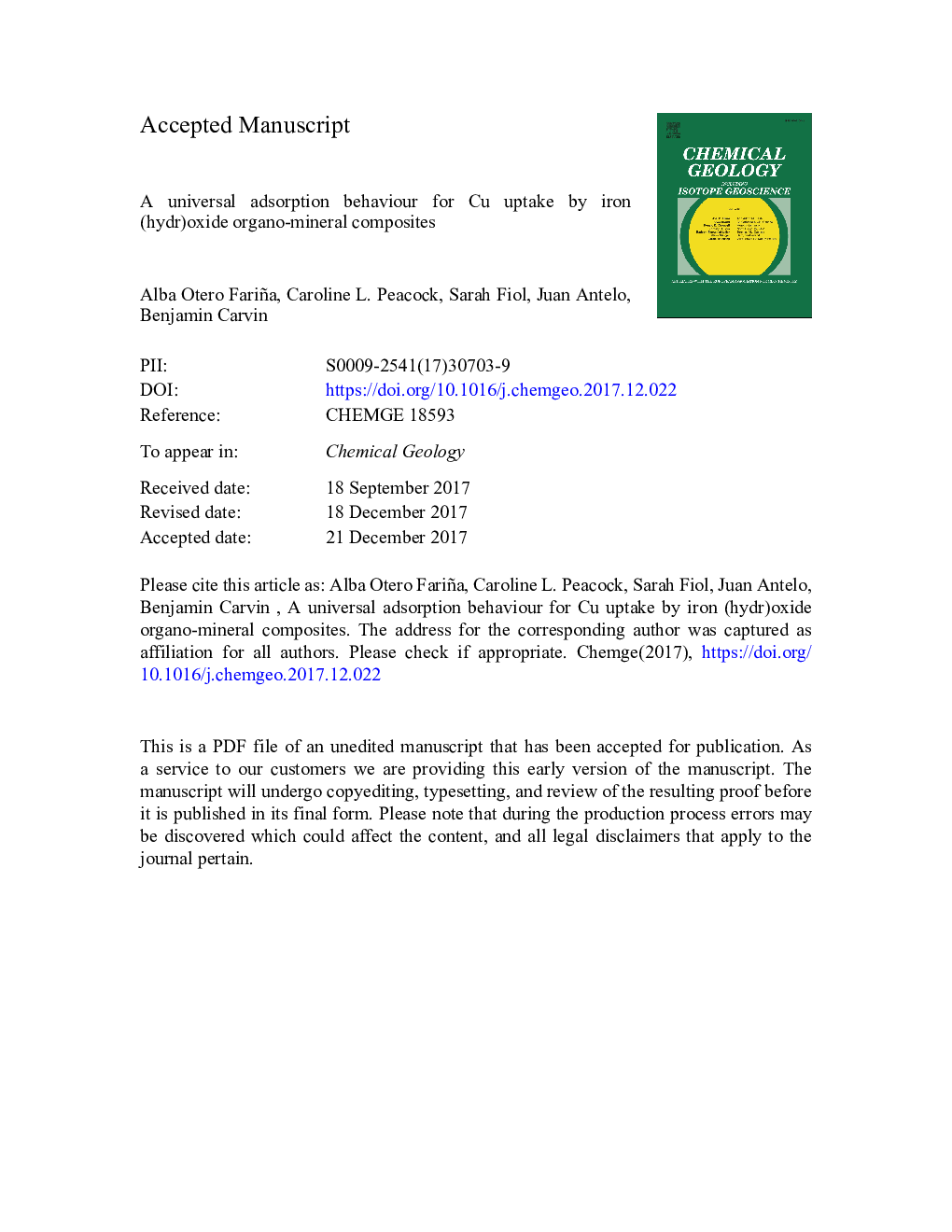| Article ID | Journal | Published Year | Pages | File Type |
|---|---|---|---|---|
| 8910371 | Chemical Geology | 2018 | 47 Pages |
Abstract
Organo-mineral composites formed by the association of iron (hydr)oxides and organic matter are widespread in natural environments and play an important role as scavengers of bioessential elements and contaminants. To better understand the mobility and fate of Cu in natural soils and sediments we precipitated ferrihydrite and goethite organo-mineral composites using humic acid as an analogue for natural organic matter, with organic carbon content in the composites ranging from 2 to 16Â wt% C. We then measured the adsorption of Cu to the end-member mineral and organic phases and the composites as a function of pH and Cu concentration. We determined the molecular mechanisms of Cu adsorption to the end-member phases and the composites, and used this information to develop molecularly constrained thermodynamic surface complexation models to quantify Cu adsorption. By combining our work here with previous work on the adsorption of Cu to ferrihydrite-bacteria composites, we provide insight into the predominance of Cu-carboxyl binding for Cu adsorption to iron (hydr)oxide organo-mineral composites, and the nature of Cu adsorption behaviour across a range of iron (hydr)oxide composites composed of different minerals and different types of organic matter. Taken as a whole our results show that Cu adsorption to the carboxyl group present in organic matter coatings on iron (hydr)oxides is likely common to most iron (hydr)oxide composites, such that Cu-carboxyl binding provides a key control on the fate and mobility of Cu in soils and sediments. Our work also suggests there is a universal adsorption behaviour for Cu adsorption to ferrihydrite organo-mineral composites, in which the mineral:organic mass ratio is a crucial parameter for determining Cu uptake. Overall we show that ferrihydrite composites composed of different types of organic matter and containing a wide range of organic mass ratios, but where the mineral is the dominant composite fraction, possess additive Cu adsorption behaviour which can be predicted using a component additivity surface complexation model.
Keywords
Related Topics
Physical Sciences and Engineering
Earth and Planetary Sciences
Geochemistry and Petrology
Authors
Alba Otero Fariña, Caroline L. Peacock, Sarah Fiol, Juan Antelo, Benjamin Carvin,
